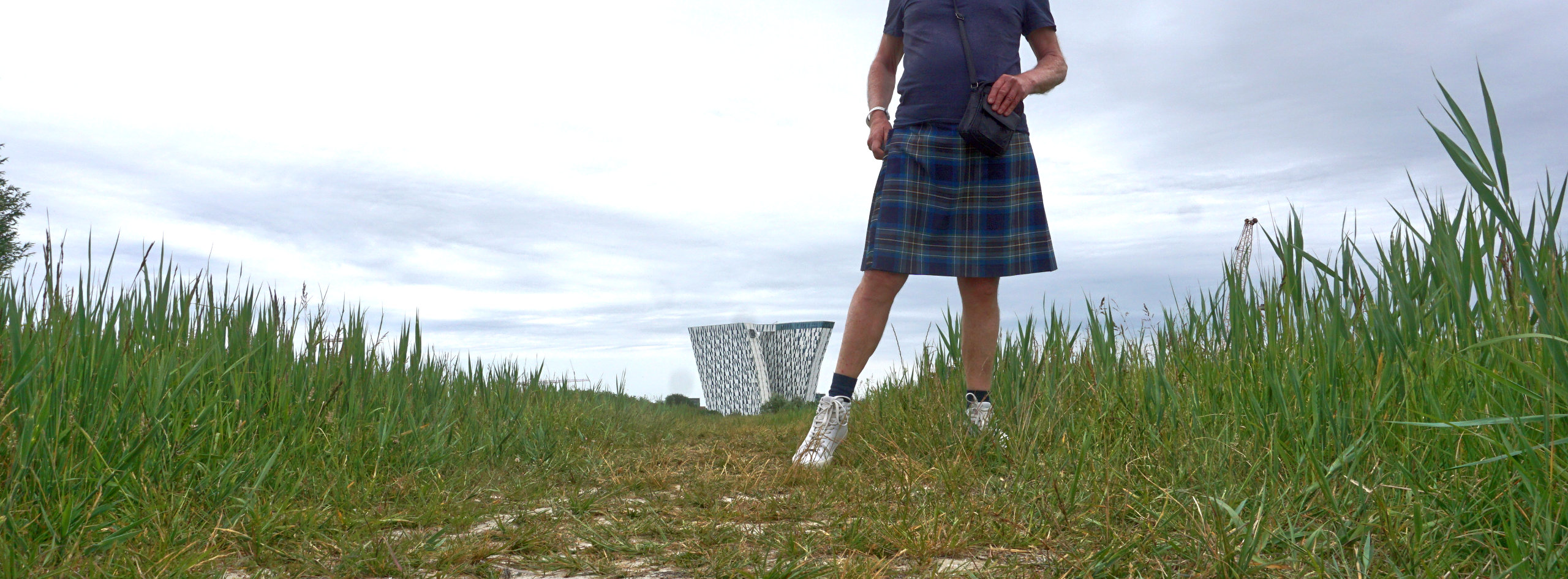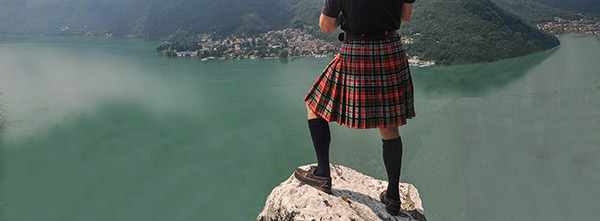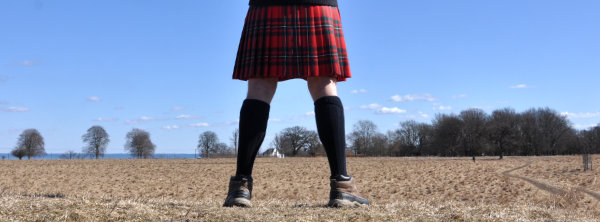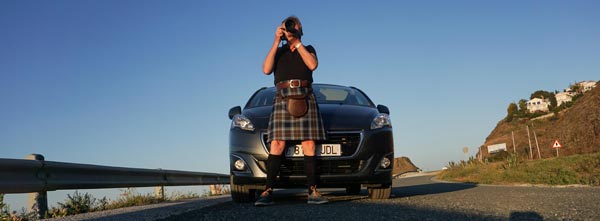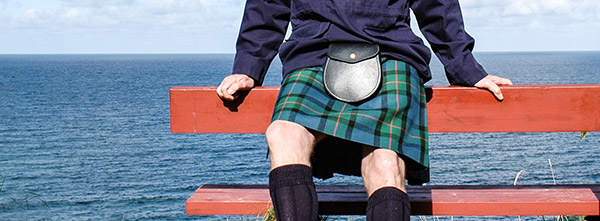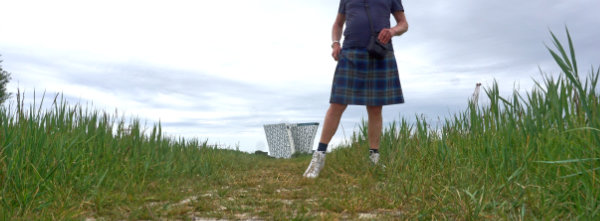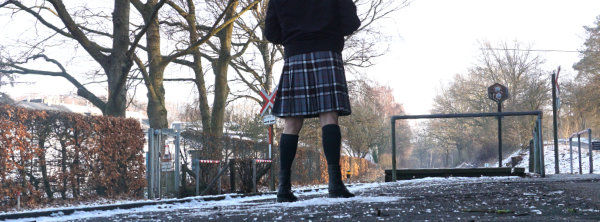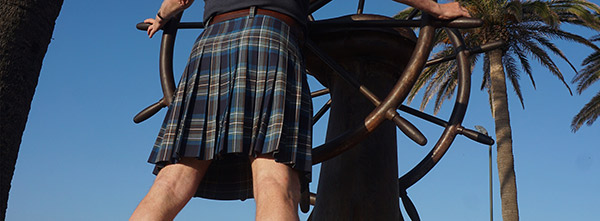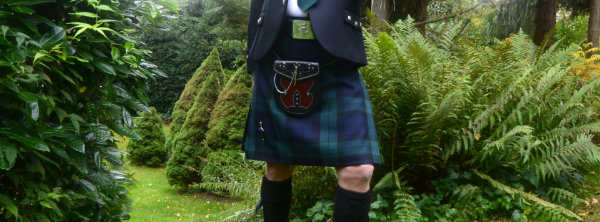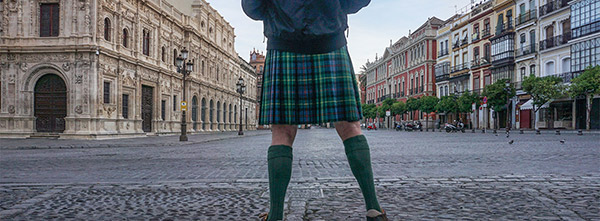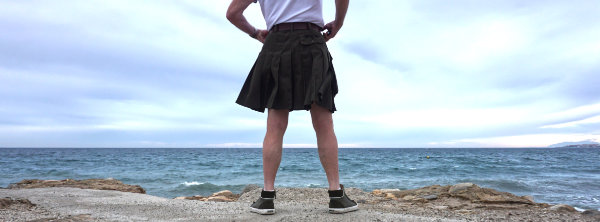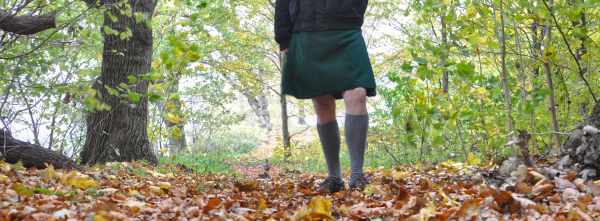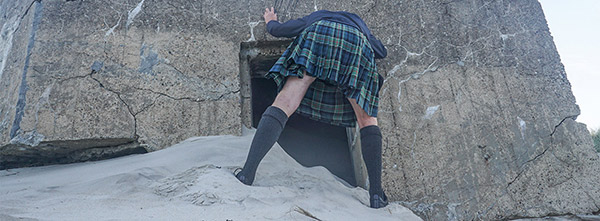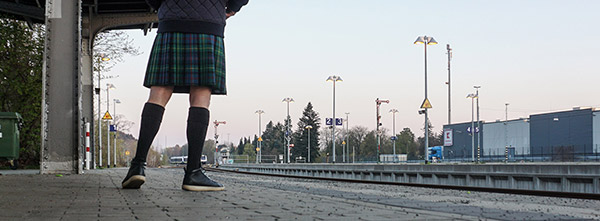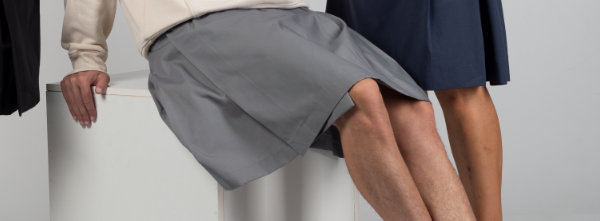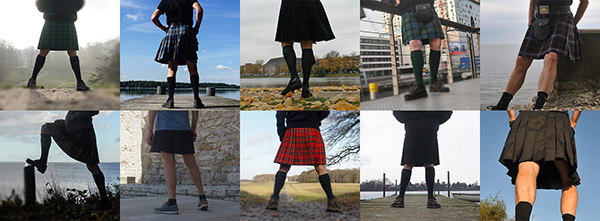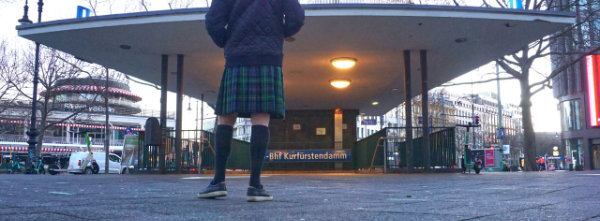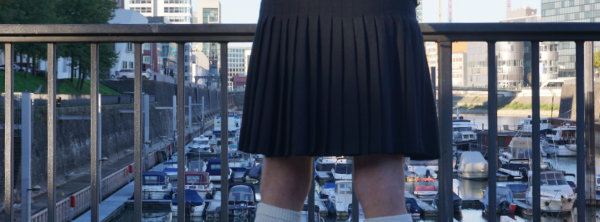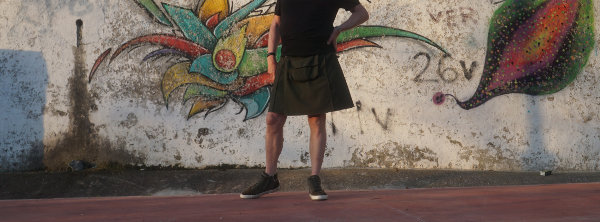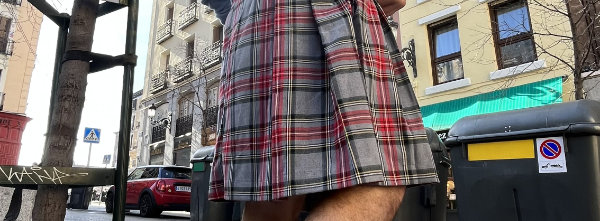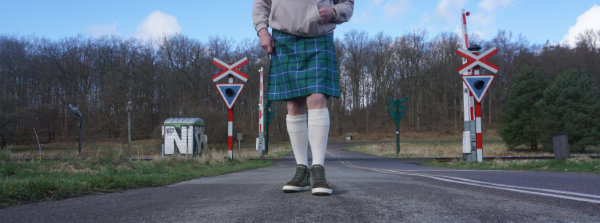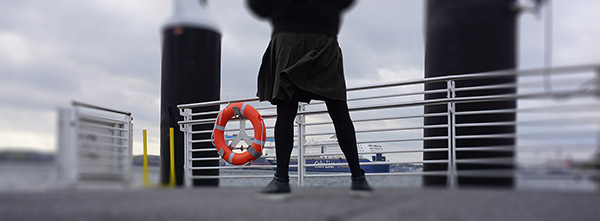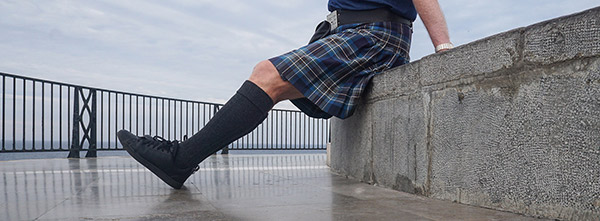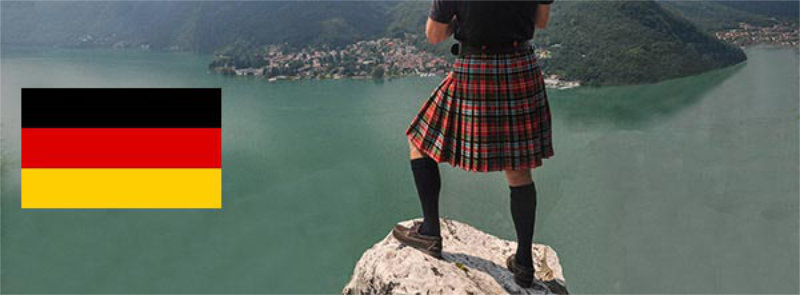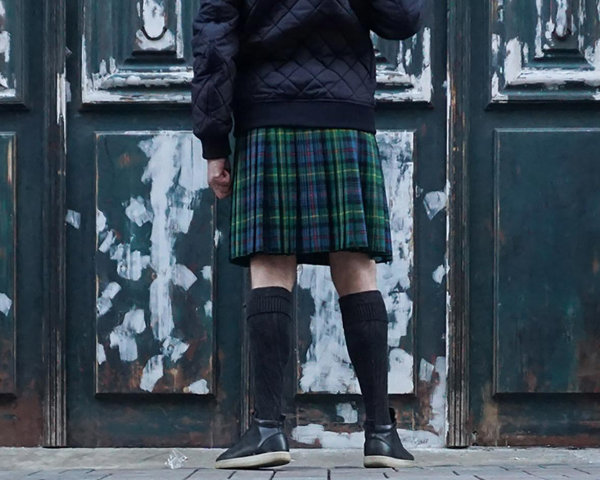Some men will say that a kilt is a skirt, some men will never dare wearing a kilt, because some will call it a skirt. Scotsmen will say they are wearing a kilt, NOT a skirt. To them it’s a garment of its very own and exclusively for men. Some will even say they are wearing THE kilt.
On the internet you can even find men, who won’t say or write skirt. Instead, they use the ‘SK-Word’.
Therefore, NEVER say to a Scotsman that he is wearing a skirt!
But how do dictionaries define a kilt, then?
Well, in the ones I have seen, the kilt is described as - a skirt or kind of skirt, like
A skirt with many folds, made from tartan cloth and traditionally worn by Scottish men and boys.
1. A knee-length skirt with deep pleats, usually of a tartan wool, worn as part of the dress for men in the Scottish Highlands
2. A similar skirt worn by women, girls, and boys.
AllWords.com
1. a traditional Scottish garment, usually worn by men, having roughly the same morphology as a wrap-around skirt, with overlapping front aprons and pleated around the sides and back, and usually made of twill woven worsted wool with a tartan pattern.
2. (historical) Any Scottish garment from which the above lies in a direct line of descent, such as the philibeg and the great kilt or belted plaid.
3. a plaid, pleated school uniform skirt sometimes structured as a wrap around, sometimes pleated throughout the entire circumference
American Heritage Dictionary/Answers.com
A knee-length skirt with deep pleats, usually of a tartan wool, worn as part of the dress for men in the Scottish Highlands.
A similar skirt worn by women, girls, and boys.
Cambridge Dictionaries Online
A skirt with many folds, made from tartan cloth and traditionally worn by Scottish men and boys.
DC DictioraryCentral.com
A skirt, usually of tartan cloth worn by men in Scotland, and also by women.
Definitions.net
1. a pleated kneelength tartan skirt worn by Scotsmen in the Highlands or in some military regiments.
2. a skirt modeled on this for women and girls.
Dictionary.com
Any short pleated skirt, especially a tartan wraparound, as that worn by men in the Scottish Highlands,
Merriam-Webster
1. A knee-length pleated skirt usually of tartan worn by men in Scotland and by Scottish regiments in the British armies.
2. A garment that resembles the Scottish kilt.
Oxford Dictionaries
A knee-length skirt of pleated tartan cloth, traditionally worn by men as part of Scottish Highland dress and now also worn by women and girls.
The free Dictionary
1. A knee-length skirt with deep pleats, usually of a tartan wool, worn as part of the dress for men in the Scottish Highlands
2. A similar skirt worn by women, girls, and boys.
Thesaurus
A knee-length pleated tartan skirt worn by men as part of the traditional dress in the Highlands of northern Scotland.
A skirt - a garment hanging from the waist; worn mainly by girls and women.
Urban Dictionary
1. A knee-length wrap skirt with vertical knife pleats on the sides and back made from a tartan woolen cloth and traditionally worn by men of the Scottish Highlands. (Traditional usage)
2. A skirt similar to the traditional Scottish kilt, and may have differing properties such as a solid color, non-tartan patterns, having pleats all around, or varying overall lengths. Generally associated with being worn by men and boys, but is sometimes worn by women and girls. (More common usage)
3. Any other type of skirt sold as a kilt, or a skirt worn by men. (Most liberal interpretation)
Webster's New World College Dictionary
A pleated skirt reaching to the knees, esp., the tartan skirt worn sometimes by men of the Scottish Highlands.
A kilt is a skirt, it seems, but so what?
A Mercedes-Benz is a car, but far from every car is a Mercedes-Benz. So it is with skirts ans kilts. To be called a kilt, there are rules to follow. And if you hold a kilt in your hands, and compare it with any of your wife's skirts you'll immediately realize, that the difference is much, much bigger than between
your jeans and hers. In this respect, a kilt
is a garment of its very own.
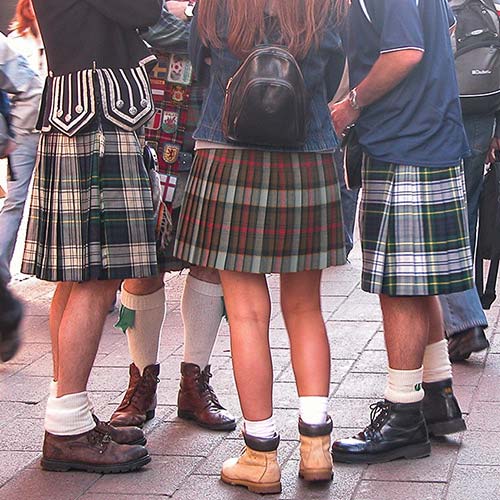
Flanked by lads in kilts, the young lady is looking pretty in her short kilt,
minikilt, kilted skirt, or whatever you are calling it.
Be aware, that by far not all calling your kilt a skirt or even a dress have a wish to insult you. Many, not being in a Scottish environment, simply don't have the noun kilt on the tip of their tongue.
"Nice skirt!" or "nice dress!"
might therefore very well be a praise. And you should react accordingly.
What makes a kilt?
A lot of fabric
If you open a kilt and place it flat on the floor, your first impression might be what a lot of fabric. The fabric is also called the
tartan.
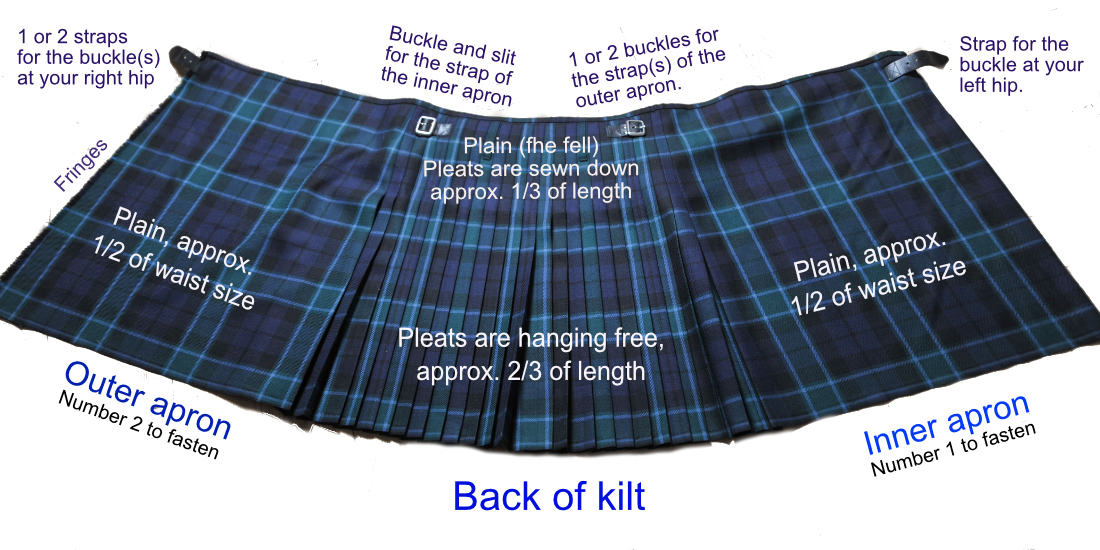
A kilt consists of three parts, two aprons and a back. When the kilt is closed, the aprons will be overlapping each other, meaning you have an inner and an outer apron. The last one which is fastened at your right side, also makes the visible front. Going from hip to hip each apron measures about half your waist size, leaving the rest of the fabric to be used for the pleated back of your kilt, also going from hip to hip. It will vary with the yardage of your kilt.
Yardage
You can have 4, 5, 6, 7, and 8-yard kilts. One vendor even has a 2-yard kilt to offer.
Eight yards used to be the norm, and to many purists it is still a must. However, today most kilts, even fine wool kilts, might be 5-yard kilts, due to them providing a good compromise between cost/price, authenticity, and comfort.
Tartan weight
The tartan is defined by its
weight in ounces (1 oz. = 28.35 g) for one yard of double width cloth (about 60 inch = 140 cm).
An 8-yard kilt can in most cases be made of 4 yards double width or 8 yards single width tartan (about 30 inch wide).
Heavy weight = 16 oz.+might not be the optimal choice on a hot summer day. To most purists 16 oz. (or more) is a must, however.
Medium weight = 13 oz.is probably the most universal and popular weight for kilts today.
Lightweight = 10-11 oz.is primarily for kilts to be used in a hot climate. Purists will say that a lightweight kilt does not have the right swing and that it needs a lot of ironing. It is not what I have experienced myself.
Ultra-lightweight = 8 oz.Should you want a kilt that lightweight, you might take a look at American
Sport Kilt.
In general, a heavy weight tartan is more expensive than a lightweight one, but the price is also affected by the
mill that delivers the tartan.
Tartan mills
Reputable tartan mills are Lochcarron, House of Edgar, Strathmore, Marton Mills, D.C. Dalgliesh (Clan.com owned), and a few more.
Most of my kilts are 13 oz. 5 yard wool kilts.
Tartans
First of all, tartans are synonymous with the traditional kilt and more than 4.000 tartans are registered. They are
Clan (family) tartans for members of Scottish clans,
District tartans for men with an affinition to a certain geographical area.
Commemorative tartans to celebrate/remember something.
Universal tartans (fashion tartans) for men without clan affiliation.
Corporate tartans, designed for and registered by some companies.
Every man is free to wear any universal, commemorative, or district tartan. And no law forbids you to wear a clan tartan. Provided you wear your kilt in a proper way hardly anyone should object, should you be seen wearing "his" tartan.
And even when, how could anyone prove that you had no “right” to wear it?
Some tartans are more expensive than others. In general, popular and widespread (clan and universal) tartans are cheaper than district tartans.
A few examples
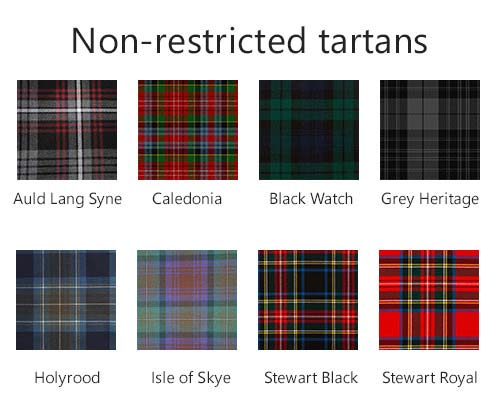
Tartans you are absolutely free to use.
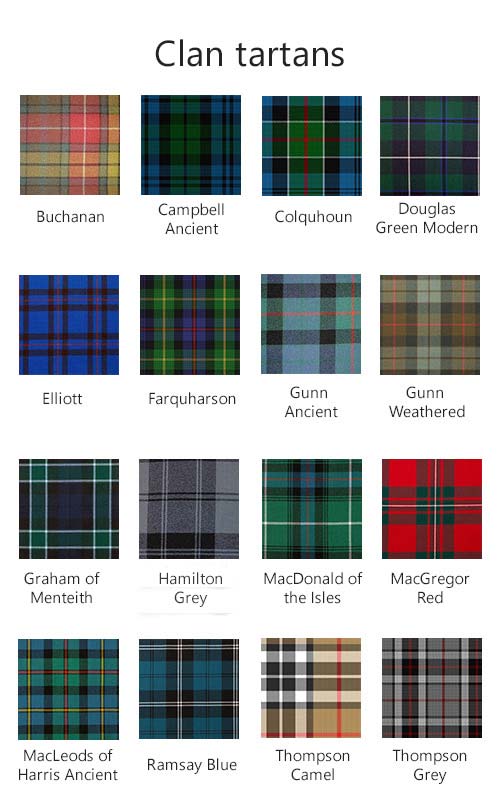
Clan tartans. If you like them, buy them, wear them, but show respect.
Straps and buckles
A kilt is being held together by a strap and a buckle above each of your hips. At your right hip you sometimes have an extra buckle and a strap. Three or two is a matter of personal taste plus what the vendor is offering.
I prefer only two straps. If a kilt, I'm to order, is shown with three buckles and straps I'll ask if I can have the kilt without the third one. It has always been possible.

The strap which fastens the under apron to the buckle on your left.
Belt loops
A kilt usually comes with two belt loops, being almost invisible. In fact, they were not meant to be used for a belt but for the sporran strap. Nevertheless, they are now mostly referred to as belt loops, and they are wide enough to be used with a kilt belt.
Rise
At the top of a kilt you'll find the
rise. On a kilt, meant for day wear/casual wear, it is about two inches, measured from the midle of the buckle. This means that when using the loops for a kilt belt, the top of the kilt is almost covered.
On a "traditonal" kilt to be worn with a Prince Charlie jacket, some kilt makers will make the rise about two inches higher to be sure that the top of the kilt is covered by the short jacket.
On military style kilts it may be as much as three inches higher. When ordering be careful with the kiltmaker's instructions. If rise is not mentioned, you may neglect it.
For casual wear a kilt without additional rise looks way better than one which is optically sitting under your armpits!
Drop and length
Below the rise you have the
drop. Accordingly, the length of a kilt is drop plus rise. However, more and more vendors use the two terms interchangeably, and therefore drop most often means total length. When in doubt, check the instructions for measuring given by the vendor or maker, or better, ask.
Fell
On a kilt the pleats don’t flare out from the waist but are tapered and sewn down till where you are at the broadest, usually at your hips. This part is called the
fell. A kilt without a fell is no kilt and should be avoided. More about the fell on the get-the-measures-right page.
If you can see the stitching from outside, it is called
top-stitched. If the stitcing of the pleats at the fell are hardly to see, they are understitched. Understitched is much more timeconsuming than topstitched, and therefore more expensive.
Only connesseurs know the difference. Topstitched is fine with me.
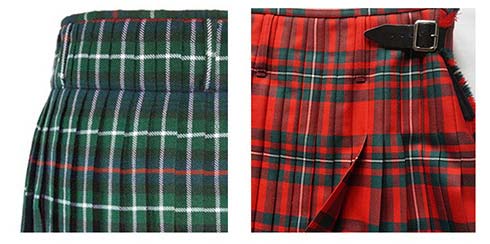
Pleats must be sewn down like on the red kilt, and not start at the waist. On the green kilt you have some pseudo-fell.
Pleating
Regarding the pleats, standard is
knife pleated to the sett, meaning all the pleats go in the same direction, and that they are arranged in a way that the tartan looks approximately the same whether you are looking at the kilt from behind or from the front.
The pleating is the difficult part of kiltmaking, and the more precisely the pleating, the better your kilt shall look – and the more expensive it shall be.
Instead of having your kilt pleated to the sett, you may have it
knife pleated to the stripe, also called
military pleating. When pleated to the stripe, each of the pleats is arranged according to a chosen colour, rather than to the entire sett. Therefore the kilt shall look quite different when looked at from behind and from the front. Hardly to order on the internet. You should have the kiltmaker visualize it.
A third option is
box pleated, meaning that the kilt shall have rather wide, flat panels on the back. A box pleated kilt is only to order with a few kilt vendors.
Apron Fringes
On a traditional kilt the outer apron will normally have fringes. Can be two or three, but also none may be a possibility. When you order a kilt on the internet it is rather unlikely that you shall be asked what you prefer.
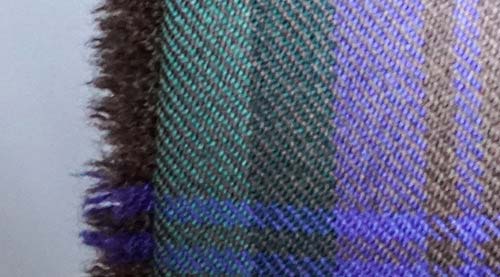
Apron fringe.
Finishing
Your kilt can be hand stitched for utmost precision or it can be sewn on the machine. It can be made to your measures by a skilled kilt maker in Scotland or other parts of the UK, or in the US or Canada. Or it can be made in a factory in Pakistan or another low labour cost country – like practically all the clothes we otherwise buy, being they cheap or expensive brands.
